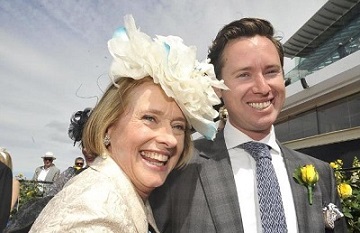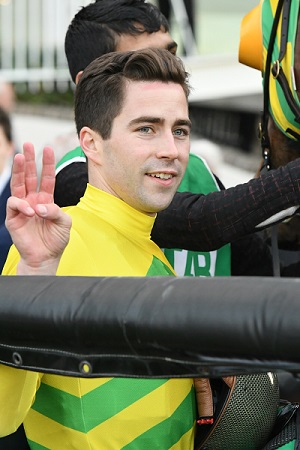Latest News
Punting Pointers is an eight-part series aimed at educating punters to help take their wagering aptitude to the next level. Brad Gray sought the insights of five of the most respected industry figures when it comes to punting, form analysis and bookmaking.
- Trusting Your Eye
- Barrier Trials
- Speed Maps
- Jockeys And Trainers
- Favourite Types Of Races To Bet In
- If A Punter Has 10mins To Do The Form…
- Sectionals
- Parting Advice
The jockey engaged for the horse and trainer making the decisions behind the scenes no doubt have a part to play in the larger form puzzle, but how much should you factor this in? Are the big stables and premiership-winning jockeys often priced too aggressively? Or, as it can be so easy to do at times, are punters overlooking the obvious?
Dominic Beirne (@domran)
There are dozens of ways to investigate trainers and jockeys in very granular ways but generally speaking, by looking at premiership tables a punter can get a pretty good sense of the worth of trainers and jockeys. In my opinion a very good jockey against an average jockey doubles the chances of it winning. It’s the difference of $5 and $10 or $10 and $20. It is a very important factor.
Horses usually experience a variety of jockeys. They don’t usually experience, from one run to another, a different trainer so whilst it is valuable to be aware that Gai Waterhouse has got a great strike rate, for example, when the horse runs again it’s still trained by Gai so that’s one of the reasons why some people don’t pay a lot of credence to the trainer because this trainer has had this horse all the time. Whereas a jockey and particular jockey switches can be more measurable as a factor.

Gai Waterhouse and Adrian Bott (Pic: Steve Hart)
Rob Waterhouse (@RobWaterhouse)
It’s very important when doing markets. I’m not sure that it should move you to have a bet though, if that makes sense. The market is aware who the trainer is and who the jockey is and the market makes allowances for it. It’s important to make analysis of your own market to reflect what the public will do. I’m not sure there is much use in backing a particular trainer or jockey, but having said that, there are some trainers that you would habitual lose backing and those you’d habitual win. If you look at the premiership, the top trainers are a little bit over bet and the top jockeys are a little over bet.
It surprised me that over 20 years if you backed all of Gai’s horses at SP you’d finish in front. It must be the best secret known. There are other trainers, and quite prominent ones, that you’d do quite poorly off.
Nathan Snow (@snowbet)
It’s more of a secondary layer for me. It used to be something I didn’t factor in at all and it’s something I am learning to appreciate, jockeys especially. The top jockeys get it done under all scenarios whereas the lesser jockeys - you don’t pen them and not back them – need the right scenario. You need them to be getting the suck run, soft draw, easy lead, pace on, whatever it is that will suit an average jockey. You need that scenario before you can back them confidently whereas a good jockey you can back them in most situations.
Trainers I take less note of. I don’t think there is as much ability-wise between the top trainers and say the number 30 trainer as there is between the top jockey and the number 30 jockey. I think it’s as much a marketing business these days. You often see average trainers that get good horses, race them well.
Where trainers are important is in terms of their patterns. How they like their horses progressing through a preparation. Chris Waller and the Hawkes stable build through a preparation, for example, while Gerald Ryan’s are generally ready to rip first up and second up. That sort of thing is very important. Their attitude to barrier draws is important in terms of how you draw up your map. Then there are certain trainers with gear changes. Breaks in preparations – some of them do it well, others not so well. Some trial horses mid-preparation, so what does that mean? Are they good up or back in distance? That sort of thing is more important about trainers than their so-called ability.
Daniel O’Sullivan (@TRBHorseRacing)
Beyond the fundamentals of form and ratings, they’d be the most important secondary factors. It’s not a primary driver of my assessment but it’s certainly relevant.

Adam Hyeronimus is often undervalued by markets says O'Sullivan (Pic: Steve Hart)
Jockey bookings are a sign of intent from the trainer so there is a different way you would view a Chris Waller runner if it’s got an apprentice riding it instead of Hugh Bowman and there are lots of other instances across the industry like that.
I’m also big on trying to stay in tune of short term cycles from stables. I believe they go through performance cycles – and you could speculate for all kinds of different reasons – but I’m very conscious of looking out for stables that might suddenly have a few horses running well, even if they are not winning but running better than their price suggests, it can be a sign that everything is going well and the horses are coming to peak. You can often use that as a bit of confidence if you like one to know that a stable has previously had a few runners that have run better than expected.
Jockey and trainers I use more of the art form component because there are periods of time where you might want to give a Joe Pride horse, for example, plus two and there might be periods where you want to give them minus two. I tend to use jockey and trainers more as an overlay in my assessment in making betting decisions rather than a factor that will dictate whether I like a horse or not.
In Sydney there are quite a lot of riders from a punting perspective that perform as well as the top names. Someone like Adam Hyeronimus, and I haven’t looked at his stats in the past few weeks, but as a general rule has an excellent percentage of winners relative to prices and there are others as well that don’t have the profile of Bowman or Blake Shinn.
John Walter (@J_Walter23)
It’s a secondary layer but it’s something you do notice when you first go through a race. Trainers have certain jockeys they like to put on at certain times. Somebody like Waterhouse and Snowden, they obviously have preferences but the guys they chase are always hard to get. Whereas the more boutique trainers make sure all the Is and Ts are crossed and dotted so when it is go day they have got the rider they want. The smaller stables are the ones I concentrate on rather than the bigger ones because you’ll drive yourself insane if you try to work out why Bowman is not on this or McEvoy not on that even though it looks a good thing. They are just so in demand and it can be a trainer, owner or anything that can stop them from being on a certain horse and having to ride another horse in the race.
In opening markets, absolutely, (the jockey and trainer) are definitely overplayed because it’s a big factor they use to produce their markets. By race time it has worked itself out but the early markets definitely overplay big stables and big stable jockey combinations.
Racing NSW - home of live racing, fields and form, replays and the latest racing news
John Schell's Tips For Quirindi (Tuesday)
Read More
Barry Molloy's 87th Birthday Present At Cootamundra
Read More
Casino Races - Full-TAB Saturday Program (Noms Extended)
Read More
Four Stakes Events Headlines Hawkesbury's Saturday Stand-Alone
Read More
Jockey Overweight - Canterbury Park (Weds)
Read More

